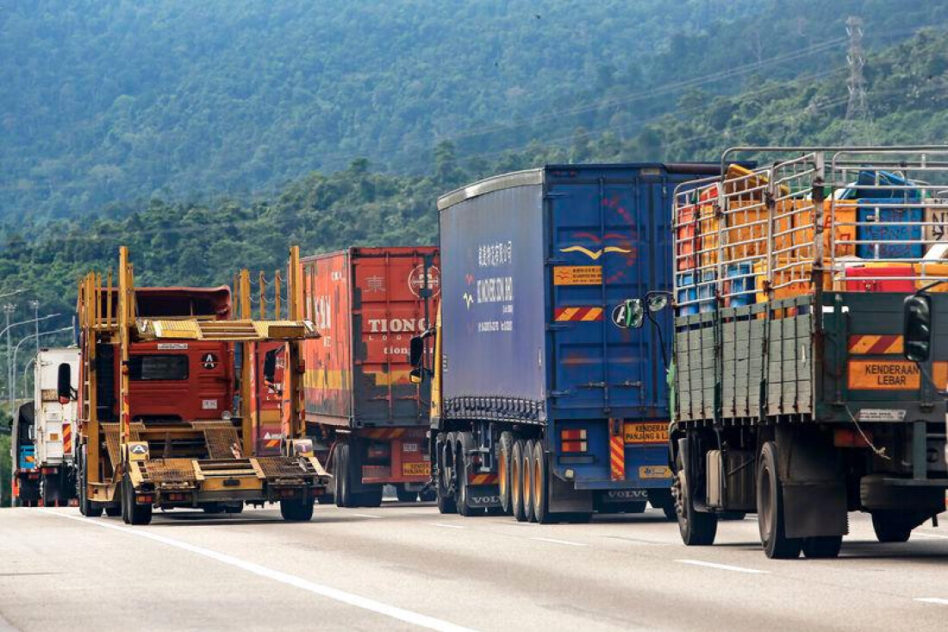RECENTLY there has been a spate of terrible traffic accidents resulting in death and injury to those affected.
There have been renewed call to re-look at the reasons for the mayhem on the roads and what needs to be done to raise the level of safety on the roads.
It is really shocking to read that 5,364 people, mostly motorcyclists, have been killed in road accidents this year. This is really too high a fatality rate for a country with a small population of around 33 million.
The nation’s roads have become totally risky and unsafe and any motorist or road user could meet with a fatal accident or get injured any day. The larger number of motor vehicles and the more numerous highways have statistically spiralled the number of traffic accidents.
The authorities are doing as much as possible by way of tougher laws and enforcement but the accidents rate keeps going up.
It has been reported that more than half a million road accidents happened this year, and that 5,364 fatal accidents occurred this year until October.
Highways have now become racing circuits for cars as well as heavy vehicles and a lot of accidents happen in the highways due to speeding and human error.
I suggest implementing an innovative system that will warn speedsters at the toll plaza when the motorist pays the toll manually or automatically that there is indisputable evidence that they have broken the speed limit.
For example, if a motorist or heavy vehicle user enters the highway the entry will be recorded electronically or manually. through the transit ticket.
When he reaches the exit toll plaza and pays the toll charge. it can be correctly ascertained whether he has been speeding beyond the speed limit on the highway based on the distance and time.
For a start, a red light could be used to flash at the toll gate indicating that the driver had been speeding and could be charged for speeding. Initially it should be confined to the heavy vehicle toll lanes.
For a month the Transport Ministry can conduct this experiment and fine tune it for problems.
Those who had over-sped will have RM50 deducted immediately either by way of cash or from their Touch ‘n Go, SmartTAG, RFID or other payment methods.
Therefore highway users will be paying the toll as well as the fine for over-speeding on the highways at the toll plazas.
Recently, it was stated by the police that fines amounting to billions of ringgit over the years and decades remain unpaid.

The fines will be immediately electronically transferred to the Transport Ministry and any complaints or objections should be directed to the Ministry. I am sure this system will prompt motorists to comply with speed limits.
The heavy vehicle drivers, who are causing a lot of accidents as well as speeding on the highways with little prospect of being issued a summons, will finally be nabbed unlike as at present.
The speed limit on highways is 110km/h and for heavy vehicles it is 80-90km/h. This system will reduce the need for the traffic police and the JPJ as it appears that they have not been doing a good job at curbing speeding or accidents on the highways.
Present day heavy vehicles have powerful engines and can be driven fast even with a heavy load.
Another issue I would like to highlight is due to poorly engineered or slipshod maintenance of non-highway federal and state roads that have been upgraded to avert floods as well as due to ageing infrastructure.
Over the last two decades some of these roads nationwide have been widened, and old bridges over storm drains, streams and small rivers have been rebuilt.
However, the problem here is that the bridges have been raised but the road on both sides have not been similarly elevated.
This results in a risky accident-prone problem due to the higher gradient which goes up and suddenly comes down over the bridge.
I have noticed container trucks suddenly braking or slowing down and being driven over the bridge with a strong jerk. This strong jerk could lead to the container detaching itself from the prime mover and causing a fatal accident similar to the container accident recently in Penang.
Wherever bridges have been rebuilt the road on either side needs to be sloped gradually or better still the road should be levelled to the height of the bridge to prevent a severe jerk when going over the bridge.
Additionally, why isn’t the KEJARA Demerit Points System for Traffic Offences being implemented? This system is effective and fair and should have been implemented as soon as it was conceptualised as it will prevent corruption, one of the main reasons for motorists being callous on the road.
This demerit points system will be fair as it will not punish the first time and infrequent offenders but gives sufficient warning not to repeat the offences.
Beyond that it could lead to heavier penalties and even suspension of driving licence. The KEJARA system must be implemented without delay as one of the many effective ways to curb the spiralling traffic offences and accidents. – Nov 20, 2024
V. Thomas is a Focus Malaysia viewer.
The views expressed are solely of the author and do not necessarily reflect those of Focus Malaysia.









